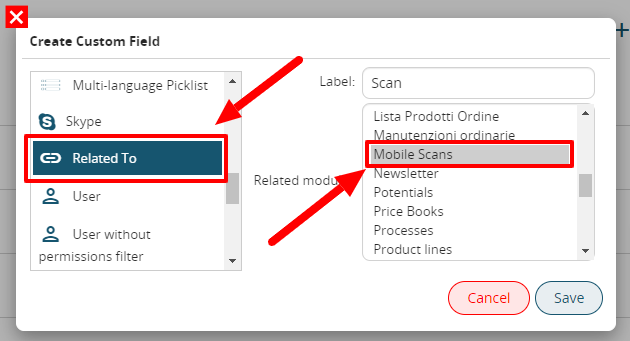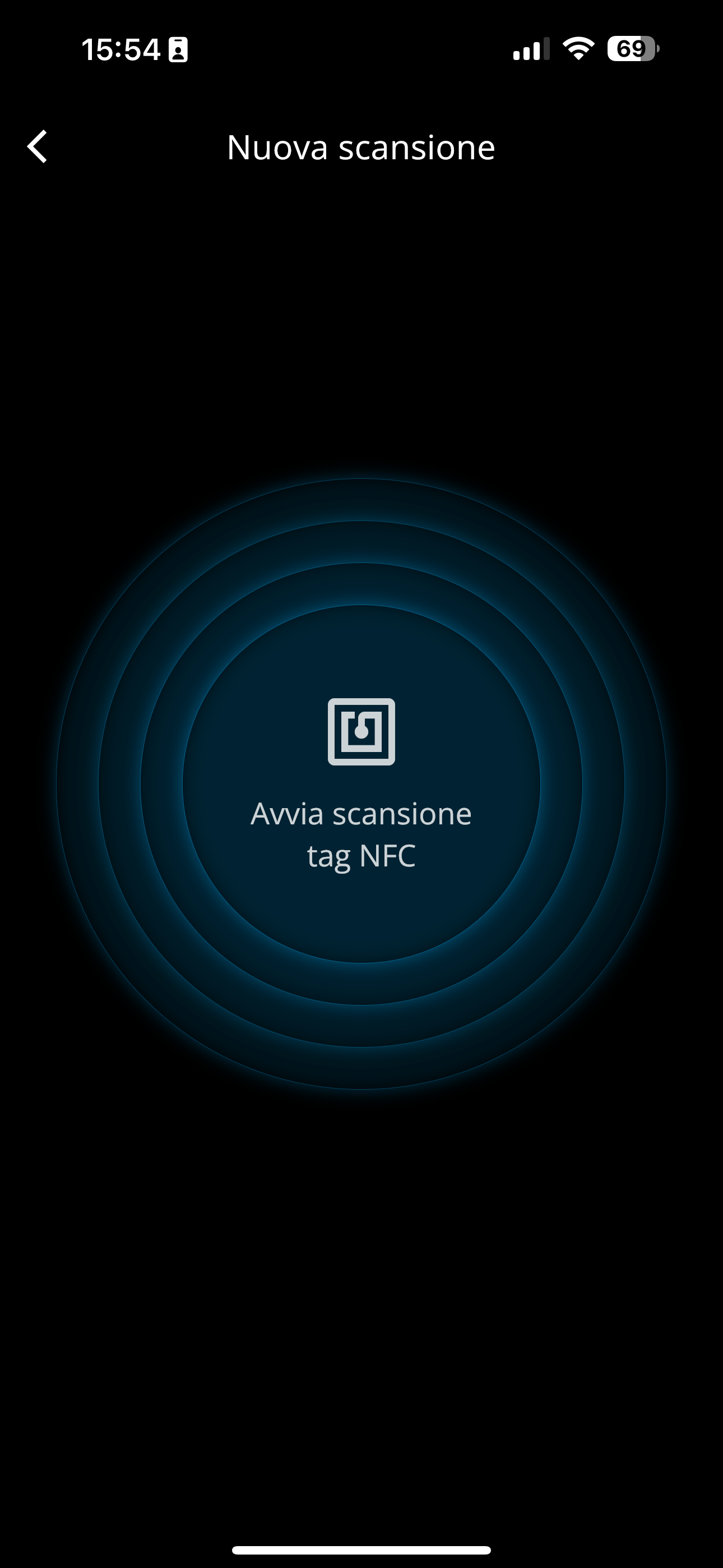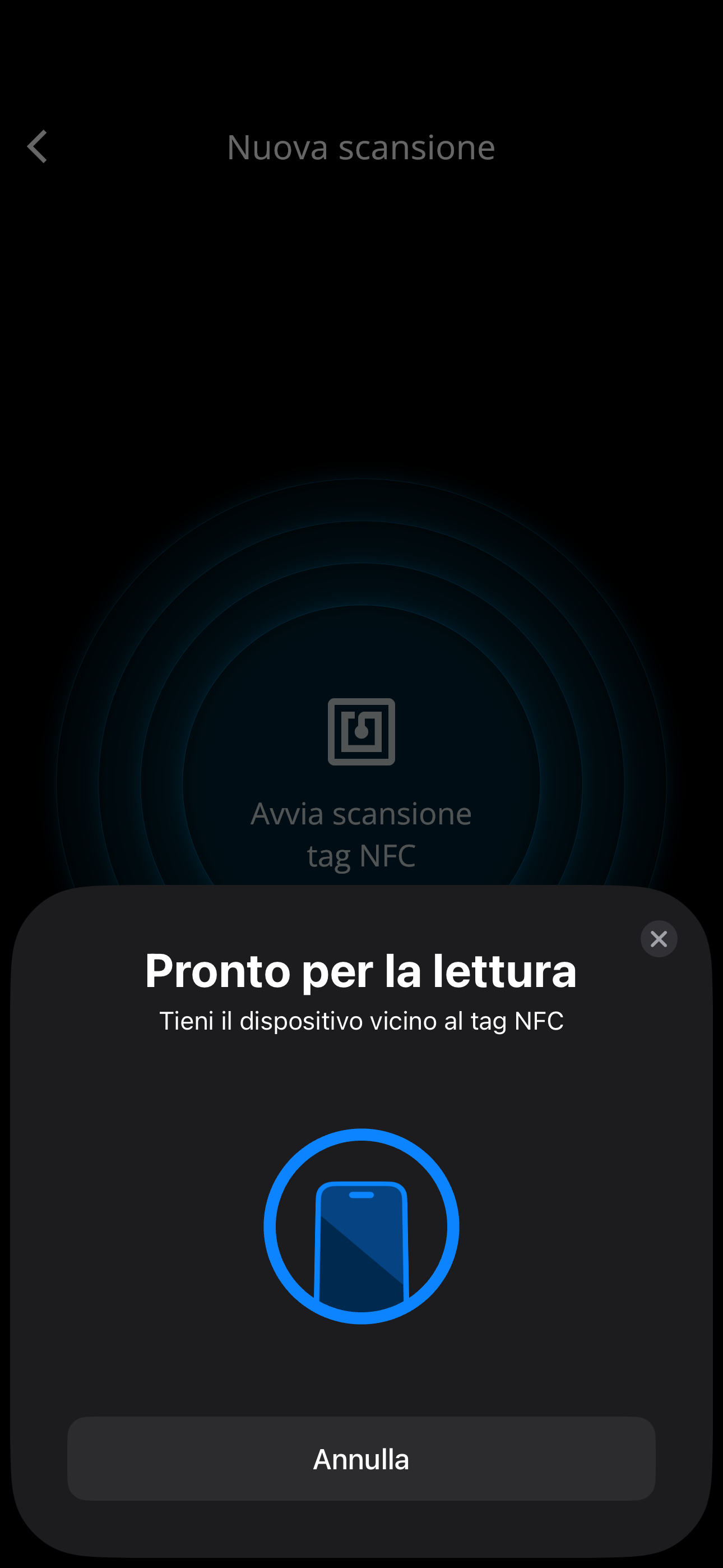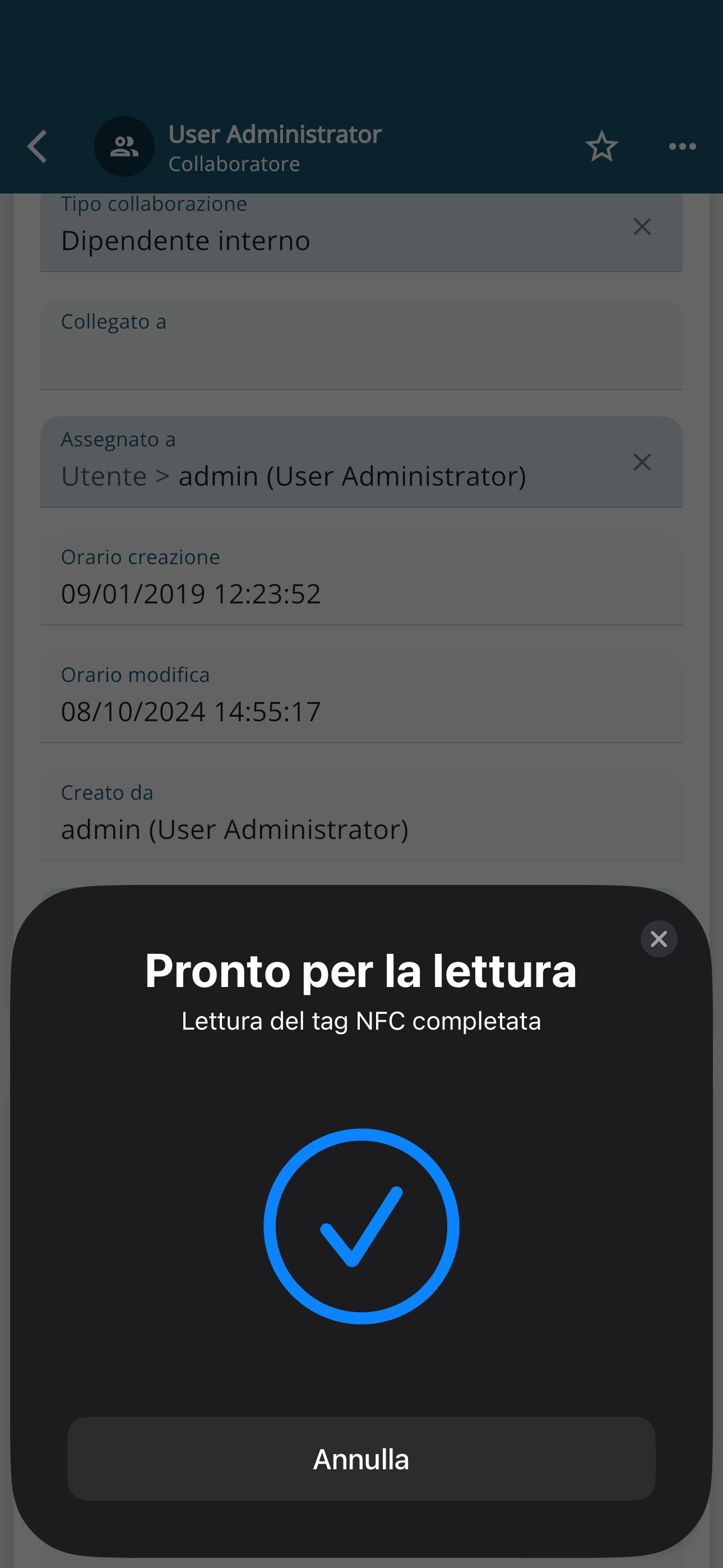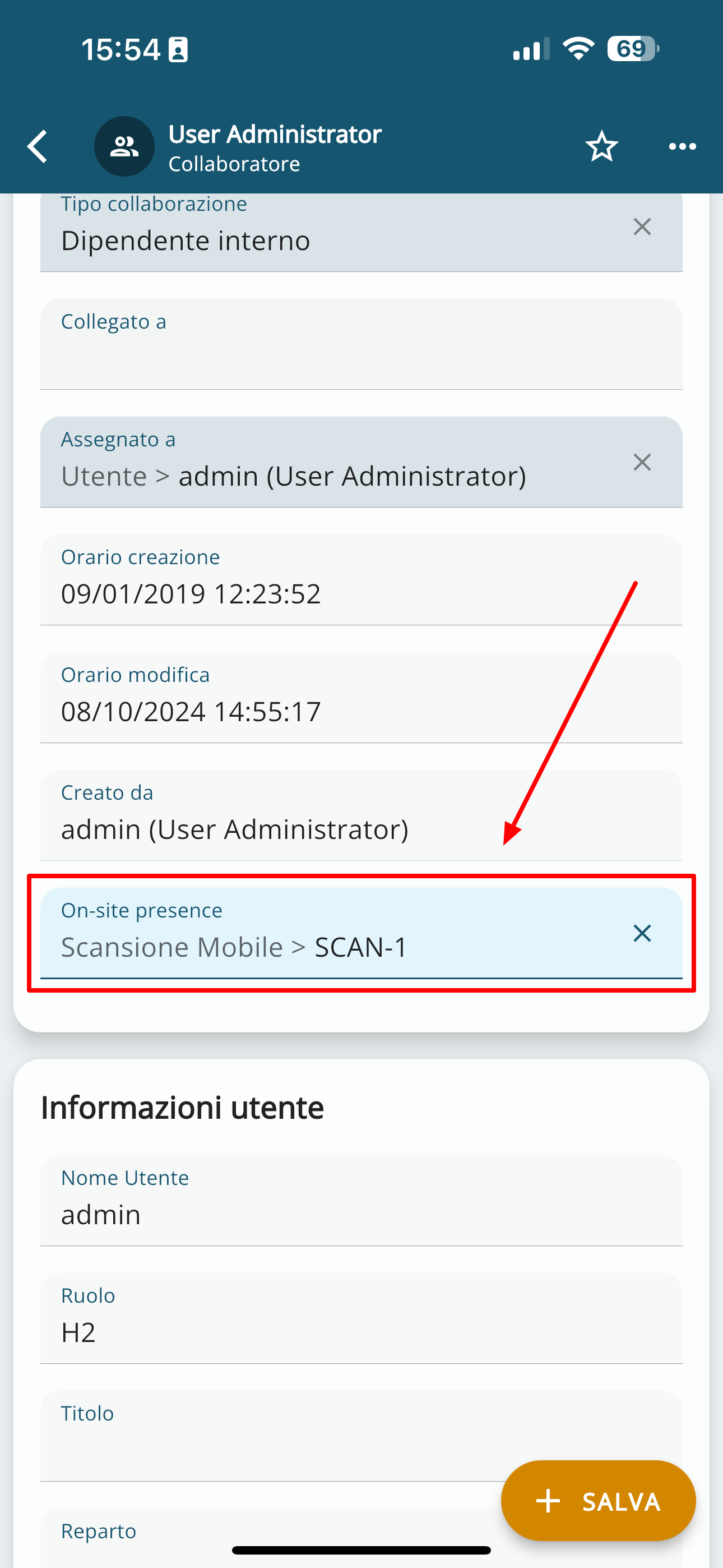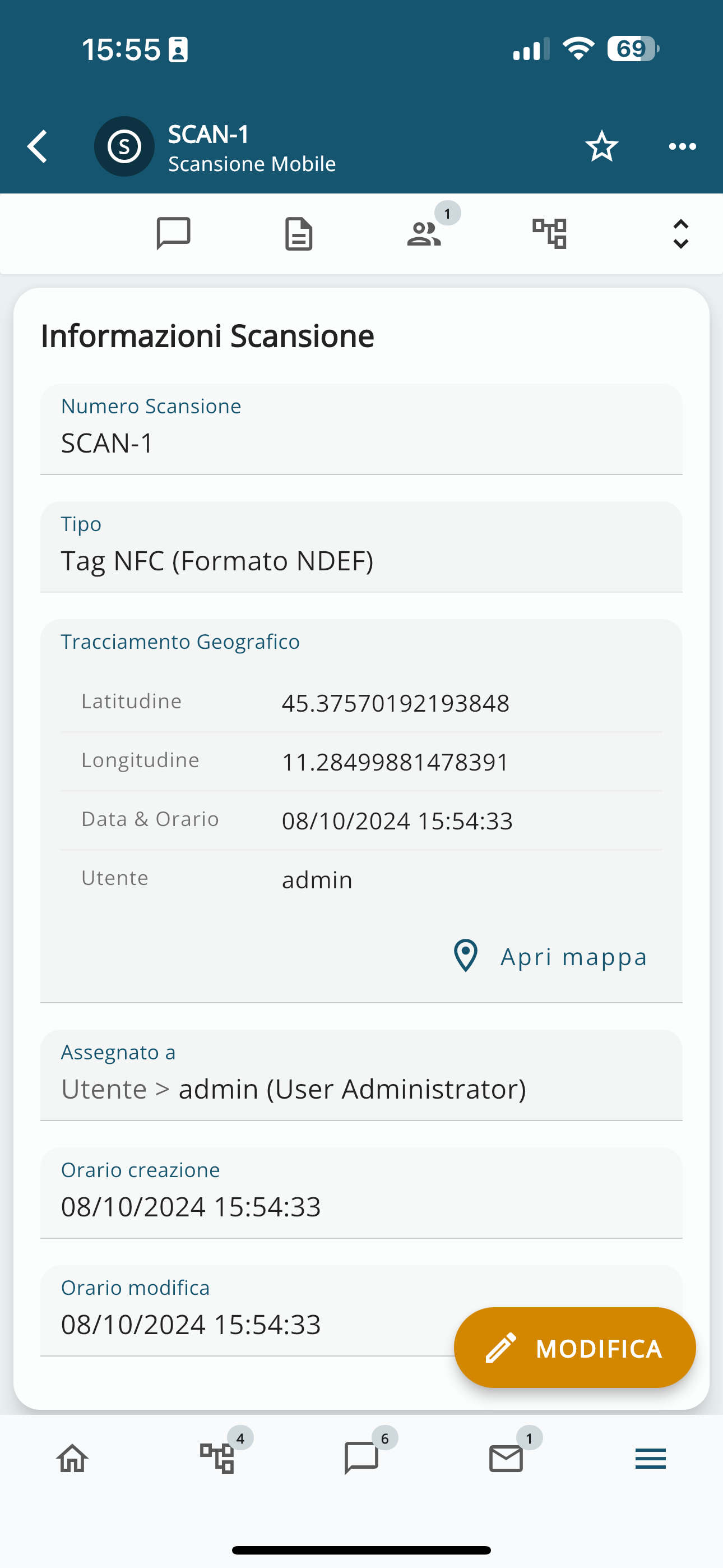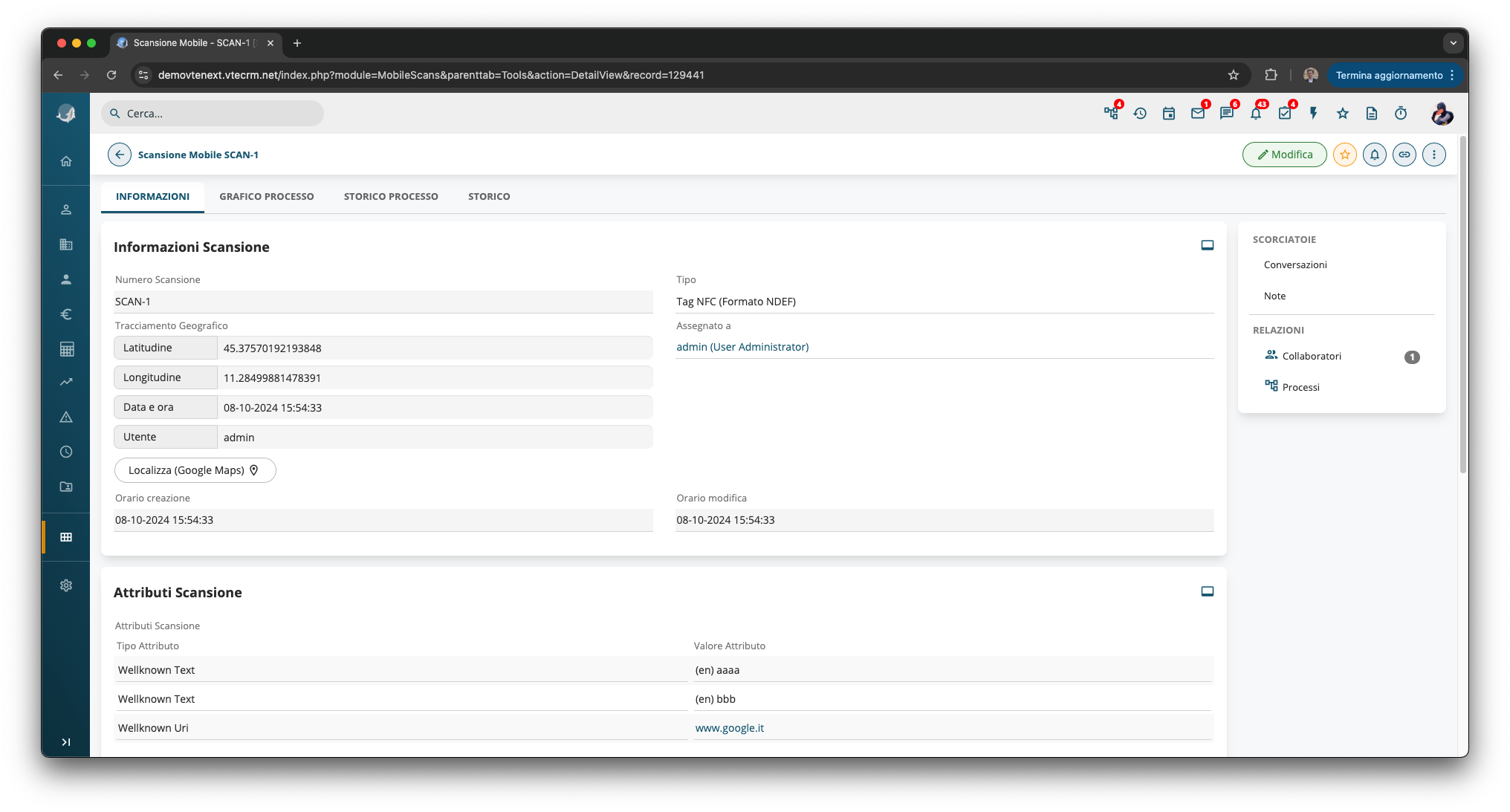2.2 NFC Function - Mobile Scansions
NFC (Near Field Communication) is a short-range wireless communication technology that allows devices to exchange data when they are close to each other, typically within a range of about 4 cm. Here's how it works:
Basic Principles:
- Short-range communication: NFC devices, such as smartphones, card readers, or NFC tags, must be very close to each other to initiate data exchange.
- Frequency: NFC operates at 13.56 MHz, a frequency that allows for fast and secure information exchange over short distances.
- Active and Passive Modes:
- In active mode, both devices generate an electromagnetic field to transmit data.
- In passive mode, only one device generates the electromagnetic field (e.g., a smartphone), while the other device (e.g., an NFC tag) uses it to power itself and respond.
How NFC works in vtenext:
To activate and use this feature, a few configuration steps are required. First, from vtenext's administration panel, go to SETTINGS > MODULE MANAGER > COMPANIES (or another relevant module), and add a related field to the Mobile Scans module.
This field will be immediately available on the Wilson App, and by clicking on it, the screen to scan the NFC tag with the mobile phone will be activated.
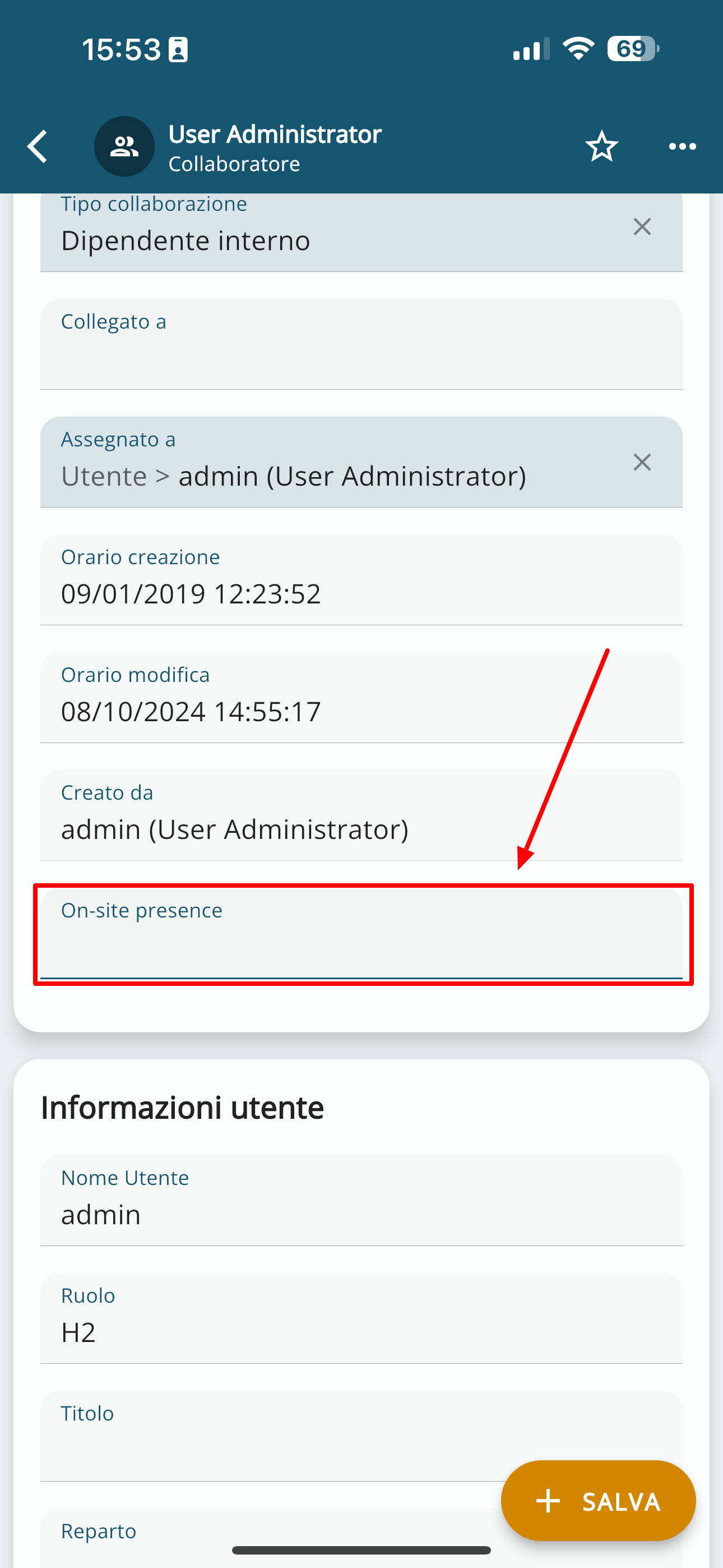
NFC scan field on the Wilson App to click on in order to activate the NFC tag acquisition.
NFC tag scanning startup screen
Screen dialog where the system prompts the user to bring the NFC tag closer for reading
The tag is captured, and a record is also written in the related field that was previously created
Here is the record as it appears in the related field after being scanned
Here is the scanned record in detail (Mobile Scan card as seen from the Wilson App)
Here is the scanned record in detail (Mobile Scan card as viewed from the vtenext web side)

